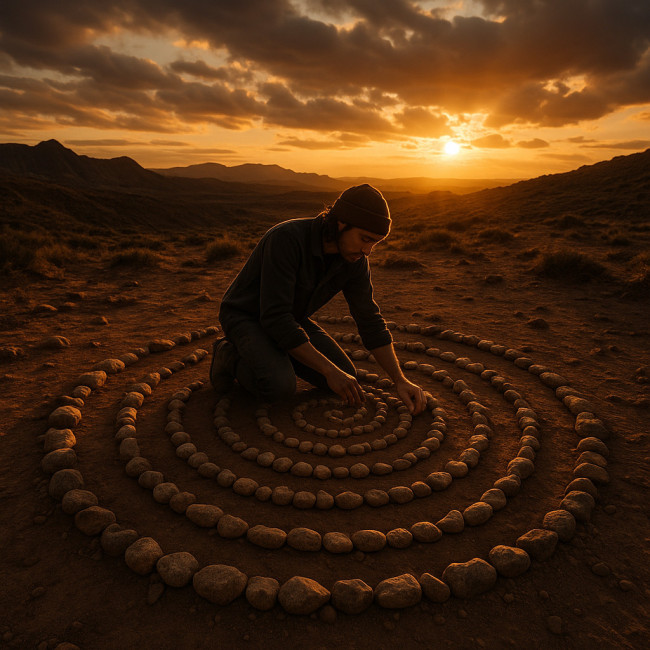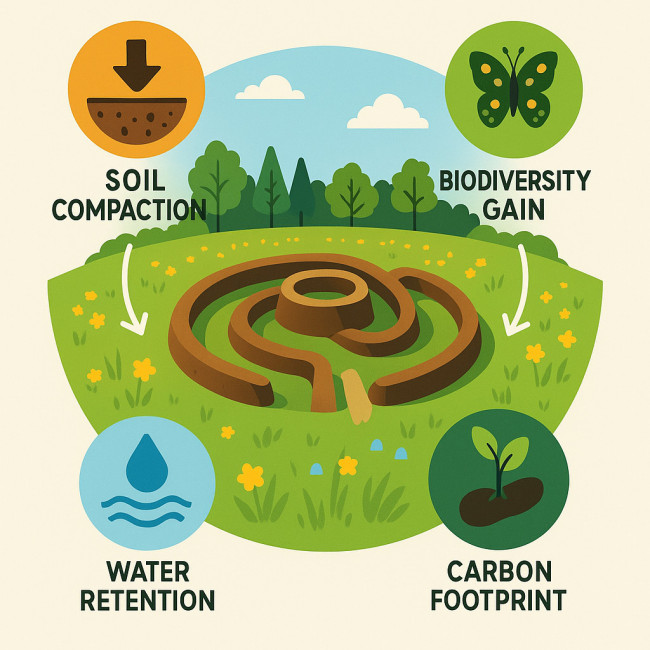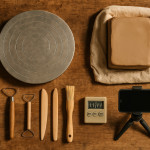From maker to land artist: experiential paths to refine site-specific skills
Dreaming of scaling your studio practice into monumental, site-specific statements? This guide maps the experiential paths that transform a versatile maker into a confident land artist. You will discover field-tested learning routes, material know-how, ecological literacy, and professional milestones that keep sponsors, curators, and communities on your side.
Why experiential learning matters in land art

Land art demands direct contact with terrain, weather, and local stakeholders. Unlike workshop-based crafts, you cannot simulate slope gradients, hydrology, or wind tunnels in a classroom. Experiential learning gives a budding land artist three priceless assets: sensory calibration, real-time risk management, and portfolio gravity. Seasoned professionals describe this haptic intelligence as “reading the land” — a capacity no slideshow can transfer. It fuses muscle memory with micro-climate awareness, anchoring every creative gesture in real-world resilience and turning abstract concepts into installations capable of withstanding both critical scrutiny and environmental stress.
- Sensory calibration – train your eye and body to read soil density, sun paths, and seasonal plant cycles.
- Real-time risk management – fieldwork exposes you to permits, safety, and public interaction that theory often skips.
- Portfolio gravity – each completed site acts as social proof, lifting your next proposal above desk-bound competitors.
Five high-impact pathways to sharpen site-specific skills
1. Micro-residencies on ecological reserves
Short residencies (7–21 days) let you test materials directly in fragile environments. Focus on low-impact interventions—shadow lines, biodegradable pigments, or reflective water channels. Many reserves offer a mentor ranger who can validate soil safety. Complement your prep with the comprehensive soil-safe materials list to avoid costly clean-ups.
2. Seasonal site-scouting sprints
Book four weekend trips per year to the exact coordinates you plan to propose. Record light angles, wildlife patterns, and visitor flows. Photograph the same frame every hour to build a time-lapse archive. This evidence strengthens any pitch deck and pairs perfectly with insights from seasonal site scouting tactics.
3. Collaborative builds with landscape architects
Shadow an architect's field crew for a week. You will learn drainage calculations, equipment logistics, and language that procurement teams respect. Document every joint decision; these notes double as process visuals for future grant applications. A structured workflow similar to co-designing with landscape architects keeps roles clear and cuts miscommunication.
4. Permit drill workshops
Regulations change by municipality. Dedicate two weekends to mock-filing permits for imaginary works. The exercise shortens real-world lead times by 30 % on average. For advanced guidance, consult permit pathways for landscape artworks.
5. Data-backed impact audits
Install simple environmental sensors—soil moisture probes, pollinator counters, or sound meters—around your piece. A three-month dataset translates creative intent into measurable value, a language sponsors love. Deepen your method with impact metric strategies for land art.
Material mastery: from studio samples to site durability
Transitioning from maker to land artist means stress-testing every medium. Clay cracks under frost, untreated wood warps, and pigments fade under UV. Follow this progression:
- Bench tests – expose samples to heat guns, saltwater, and abrasion wheels.
- Micro-installations – embed 20 cm pieces outdoors for 12 weeks; log changes weekly.
- Pilot module – scale to 1 m² and invite peer critique on finish and safety.
Document failures as openly as successes. Curators appreciate transparency over perfection—it signals due diligence.
Tech tools elevating contemporary land artists
- GIS mapping – overlay creative sketches on topography data to anticipate water run-off.
- Drone photogrammetry – capture 3D models for remote client approvals without new site visits.
- AR previews – project a life-size hologram on location, helping communities visualise scale before ground is broken.
Most of these tools integrate smoothly with the training programs for craft designers that many grant panels already recognise.
Building ecological literacy

Public agencies increasingly require restoration plans alongside artistic concepts. Strengthen your ecological pitch by mastering quantifiable metrics that demonstrate stewardship. From soil compaction figures and infiltration rates to pollinator counts and life-cycle carbon tallies, these numbers speak the language of environmental regulators. Demonstrating fluency in them reassures risk-averse panels, aligns your proposal with regional conservation goals, and often unlocks bonus points in competitive grant scoring matrices designed to reward measurable ecological value.
| Focus area | Key metric | Goal benchmark |
|---|---|---|
| Soil compaction | kPa after installation | <125 kPa |
| Biodiversity | Species count per 100 m² | >10 % boost vs baseline |
| Water retention | mm infiltration/hour | >15 mm |
| Carbon footprint | t CO₂e project life-cycle | <1 t |
Include these metrics in every proposal to demonstrate stewardship and qualify for green funding lines.
Funding and festival circuits
Land art budgets span €5 000 to €200 000. Diversify cash streams:
- Grant pools – align your logistics with criteria outlined in grant-ready budgets for 2025.
- Corporate CSR – pitch impact-driven installations that offset brand emissions.
- Festival stipends – events like Arte Sella or Desert X offer production support; apply 9–12 months out.
Early festival exposure accelerates portfolio growth and unlocks invitation-only commissions.
Step-by-step roadmap: 12 months to your first large-scale land artwork
- Month 1–2: Define concept, gather terrain data, and schedule seasonal scouting.
- Month 3: Produce material stress tests; refine based on results.
- Month 4: Draft budget and impact audit plan.
- Month 5: File preliminary permits.
- Month 6–7: Attend a micro-residency; prototype modules on site.
- Month 8: Capture drone models and build AR preview.
- Month 9: Finalise sponsor pitch with ecological benchmarks.
- Month 10: Secure funding and lock fabrication calendar.
- Month 11: Install artwork; document every phase.
- Month 12: Publish case study and submit to land art festivals.
Common pitfalls and quick fixes
- Underestimating weather shifts: Keep a 15 % contingency fund for storm damage.
- Permit delays: Build buffer time equal to the longest local public-comment period.
- Community resistance: Host a walk-through with VR goggles; tangible visuals defuse abstract fears.
- Material scarcity: Source 10 % surplus for natural materials that may vary in colour or grain.
Interactive self-check quiz
FAQ
- How many completed site works should a land artist have before pitching to large festivals?
- Two smaller public installations usually suffice when backed by strong ecological data and clear documentation.
- Can I outsource drone mapping?
- Yes, but learning basic drone workflows in-house reduces costs and speeds revisions.
- What is the average lead time for municipal permits?
- Expect 8–14 weeks, but always confirm local public-comment periods.
- Which insurance policies are non-negotiable?
- Public liability, environmental impairment, and equipment coverage for heavy machinery.
- Do biodegradable materials exempt me from restoration duties?
- No. Authorities still require a formal restoration plan, even for fully degradable artworks.
Next steps
Audit your current portfolio, identify gaps in ecological proof, and schedule your first site-scouting sprint within the next 30 days. Every terrain walked moves you closer to signing that landmark commission.











